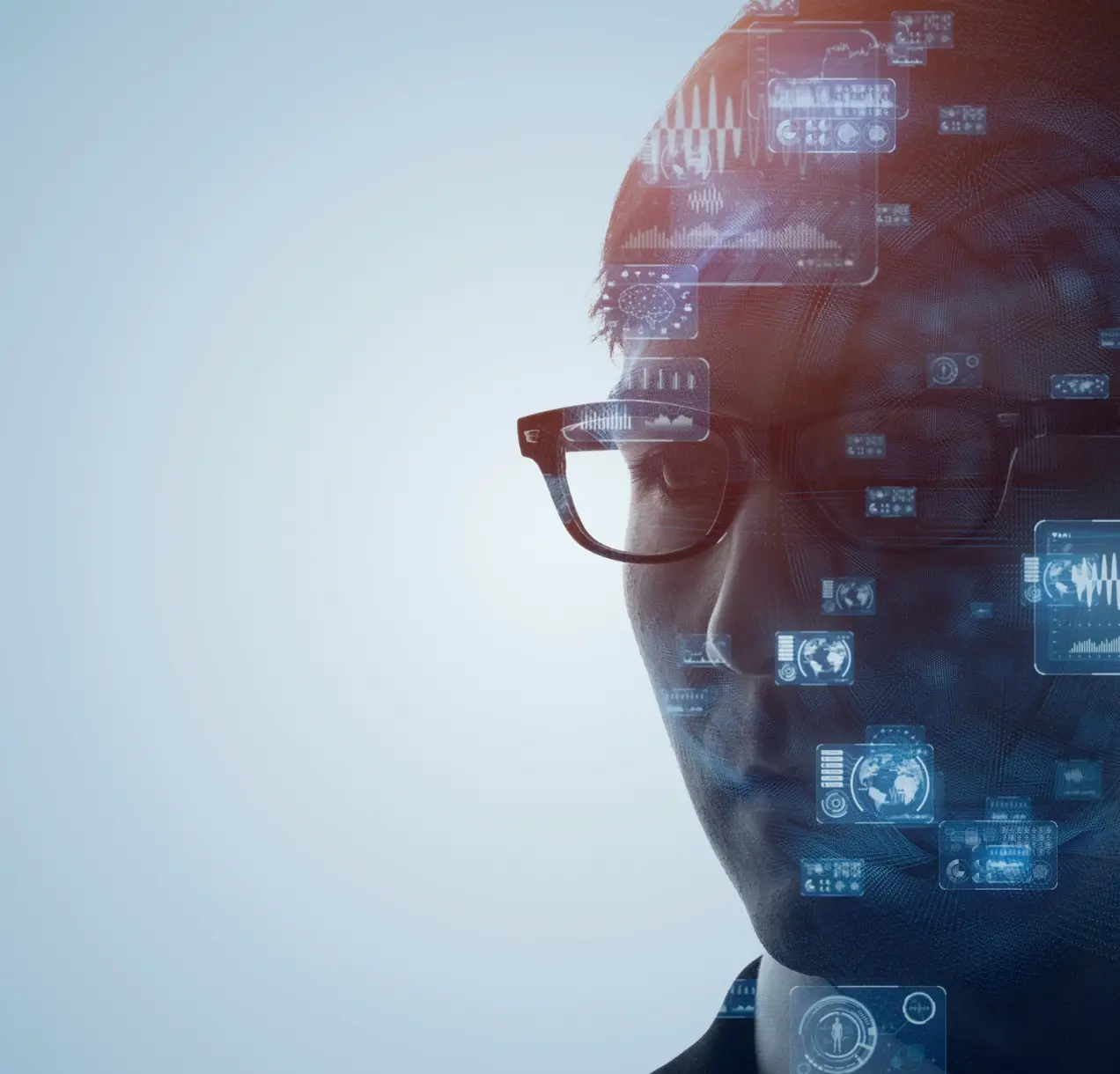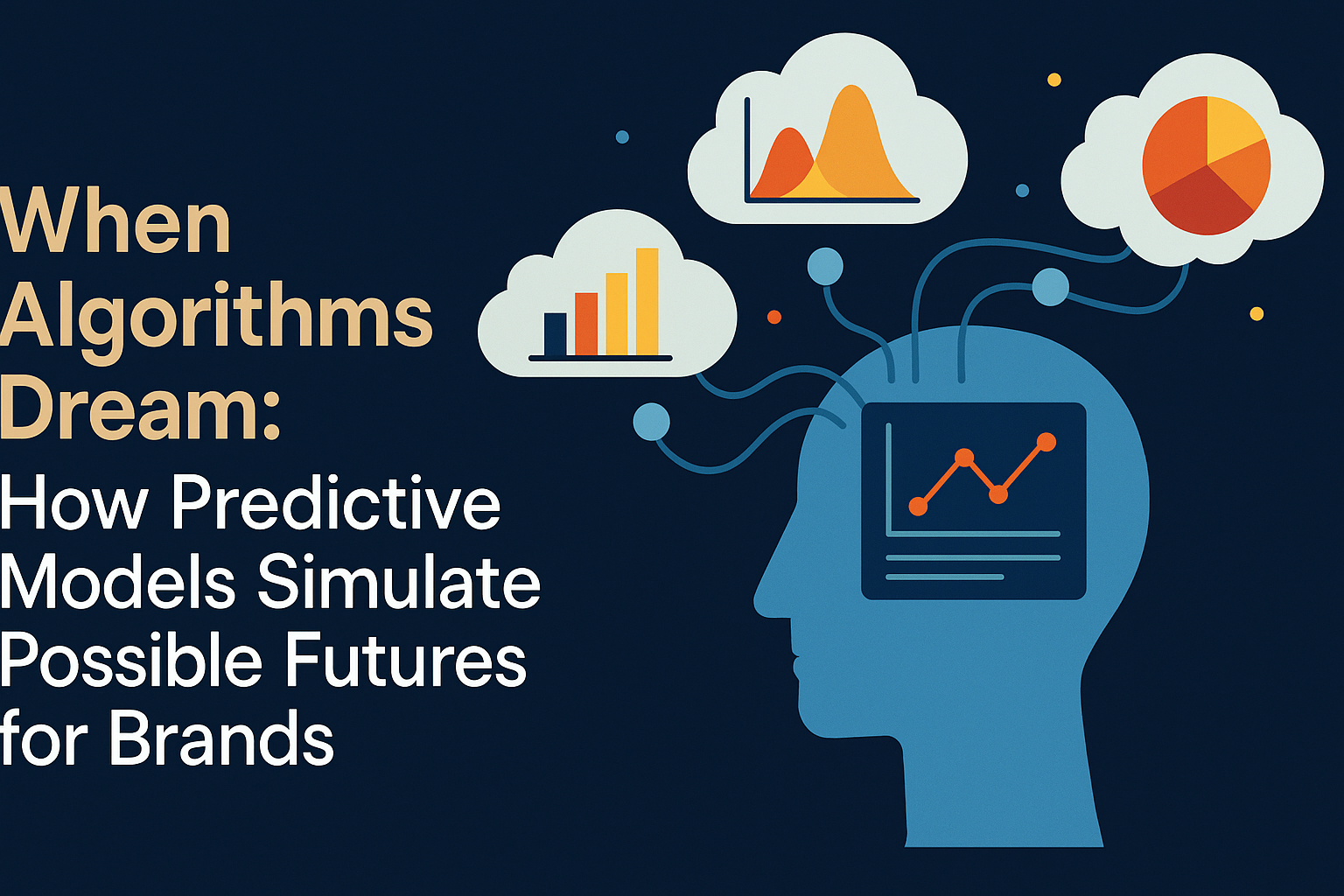The Future of Work: Human-AI Collaboration in the Enterprise
By embracing human-AI collaboration, enterprises can navigate the complexities of the modern world.

The workplace is undergoing a seismic shift. As artificial intelligence (AI) advances at an unprecedented pace, enterprises worldwide are grappling with its implications for productivity, creativity, and the very nature of work. The integration of AI into business operations is no longer a futuristic vision, it’s a present reality reshaping how organisations function, innovate, and compete. Yet, the true potential of AI lies not in replacing human workers but in fostering a new era of human-AI collaboration.
Rather than viewing AI as a threat, forward-thinking organisations are embracing it as a powerful ally, augmenting human capabilities, automating repetitive tasks, and enabling teams to focus on high-value, strategic work. From generative AI tools that assist with content creation to intelligent process automation that streamlines workflows, AI is becoming an essential partner in daily operations.
However, this shift requires more than just new tools, it demands a change in mindset, culture, and skills. Businesses must invest in reskilling and upskilling their workforce, fostering a culture of adaptability, and ensuring that AI is deployed ethically and transparently. The human touch remains irreplaceable, especially in areas requiring emotional intelligence, complex decision-making, and creativity.
This blog explores how enterprises can harness the synergy between people and machines to not only drive efficiency, but to reimagine the future of work itself.
The Rise of AI in the Enterprise
AI has transitioned from a niche technology to a cornerstone of enterprise strategy. From automating routine tasks to generating actionable insights from vast datasets, AI is transforming every facet of business operations. According to a 2024 report by McKinsey, over 60% of global enterprises have adopted AI in at least one business function, with adoption rates accelerating across industries such as finance, healthcare, retail, and manufacturing.
AI’s capabilities are vast and varied. Machine learning algorithms power predictive analytics, enabling businesses to forecast market trends, customer behaviour, and operational risks. Natural language processing (NLP) tools streamline customer service through chatbots and virtual assistants. Computer vision enhances quality control in manufacturing, while generative AI creates content, designs, and even code. These technologies are not merely tools; they are catalysts for reimagining how work is done.
However, the narrative of AI as a job-destroyer persists. Media headlines often stoke fears of mass unemployment, with some predicting that AI could automate up to 30% of current jobs by 2030. While automation will undoubtedly disrupt certain roles, the reality is more nuanced. AI is not poised to replace humans wholesale but to augment their capabilities, creating a collaborative dynamic that enhances productivity and innovation. The future of work lies in this synergy, a partnership where humans and AI amplify each other’s strengths.
The Case for Human-AI Collaboration
Human-AI collaboration is not about pitting machines against people but about leveraging their complementary strengths. Humans excel in creativity, emotional intelligence, ethical decision-making, and contextual understanding. AI, on the other hand, thrives in processing vast amounts of data, identifying patterns, and performing repetitive tasks with precision and speed. Together, they form a powerful alliance that can transform enterprise outcomes.
Enhancing Productivity
One of the most immediate benefits of human-AI collaboration is enhanced productivity. AI can automate mundane, repetitive tasks, freeing employees to focus on higher-value activities. For instance, in finance, AI-powered tools can process invoices, detect fraud, and generate reports in seconds, tasks that once consumed hours of human effort. A 2023 study by Deloitte found that organisations using AI for task automation reported productivity gains of up to 20% in operational workflows.
Consider the example of a customer service team. AI-driven chatbots can handle routine queries, such as order tracking or password resets, while human agents tackle complex, emotionally charged issues that require empathy and nuanced problem-solving. This division of labour not only improves efficiency but also enhances customer satisfaction by ensuring that human expertise is deployed where it matters most.
Driving Innovation
AI is also a catalyst for innovation. By analysing vast datasets, AI can uncover insights that humans might overlook. In product development, for instance, AI can identify consumer trends, simulate designs, and predict market reception, enabling teams to iterate faster and with greater confidence. In creative industries, tools like generative AI can assist in brainstorming ideas, drafting marketing copy, or even designing prototypes, acting as a creative partner rather than a replacement.
A notable example is the pharmaceutical industry, where AI is revolutionising drug discovery. Machine learning models can analyse molecular structures and predict which compounds are likely to succeed in clinical trials, reducing development timelines from years to months. Human researchers, meanwhile, provide the scientific intuition and ethical oversight needed to guide these discoveries. This collaborative approach has already led to breakthroughs, such as the rapid development of COVID-19 vaccines.
Democratising Expertise
AI also democratises expertise, making specialised knowledge accessible to non-experts. In enterprises, this means employees can leverage AI tools to perform tasks that once required years of training. For example, AI-powered analytics platforms enable marketing teams to generate data-driven strategies without needing advanced statistical knowledge. Similarly, no-code AI platforms allow non-technical employees to build applications or automate workflows, empowering a broader range of workers to contribute to digital transformation.
This democratisation fosters a culture of innovation, where employees at all levels can experiment and contribute ideas. It also addresses skill shortages, enabling organisations to bridge gaps in expertise without relying solely on hiring or outsourcing.
The Challenges of Human-AI Collaboration
While the potential of human-AI collaboration is immense, it is not without challenges. Enterprises must navigate technical, cultural, and ethical hurdles to ensure that AI integration enhances rather than disrupts their operations.
Technical Integration
Integrating AI into existing workflows is a complex undertaking. Legacy systems, siloed data, and incompatible technologies can hinder adoption. According to a 2024 Gartner report, 45% of enterprises cited integration challenges as a primary barrier to scaling AI initiatives. To overcome this, organisations must invest in modernising their IT infrastructure, adopting cloud-based solutions, and ensuring interoperability between AI tools and existing systems.
Data quality is another critical issue. AI models rely on high-quality, well-structured data to deliver accurate results. Poor data hygiene, such as incomplete datasets or biased inputs, can lead to flawed outcomes, undermining trust in AI systems. Enterprises must prioritise data governance, ensuring that data is clean, secure, and representative of diverse populations.
Workforce Resistance
Cultural resistance is a significant barrier to human-AI collaboration. Employees may fear that AI will render their roles obsolete or diminish their value within the organisation. This fear can manifest as reluctance to adopt AI tools or outright opposition to AI initiatives. A 2023 survey by PwC found that 35% of workers expressed concern about job security due to AI adoption.
To address this, enterprises must foster a culture of transparency and inclusion. Communicating the benefits of AI, such as its ability to reduce repetitive work and enhance career growth, can alleviate fears. Involving employees in the AI adoption process, through co-designing workflows or providing feedback on tools, can also build trust and ownership.
Ethical Considerations
The ethical implications of AI are profound. Bias in AI models, for instance, can perpetuate inequalities if not addressed. A 2024 study by the World Economic Forum highlighted cases where AI recruitment tools inadvertently favoured male candidates due to biased training data. Enterprises must implement robust ethical frameworks, including regular audits of AI systems to identify and mitigate biases.
Privacy is another concern. AI systems often rely on vast amounts of personal data, raising questions about consent and security. Enterprises must comply with regulations such as the GDPR in the EU and ensure that AI systems are transparent about how data is used and protected.
Finally, the question of accountability looms large. When AI makes decisions, such as approving a loan or diagnosing a medical condition, who is responsible for errors? Enterprises must establish clear protocols for human oversight, ensuring that AI remains a tool under human control.
Strategies for Successful Human-AI Collaboration
To harness the full potential of human-AI collaboration, enterprises must adopt a strategic approach that balances technology, people, and processes. Below are key strategies to guide this transformation.
1. Invest in Upskilling and Reskilling
The rapid pace of AI adoption demands a workforce equipped with the skills to collaborate with AI systems. Enterprises must invest in upskilling and reskilling programmes to prepare employees for new roles and responsibilities. This includes training in data literacy, AI fundamentals, and domain-specific applications of AI.
For example, a manufacturing firm might train its engineers to use AI-powered predictive maintenance tools, while a marketing team might learn to leverage AI-driven analytics for campaign optimisation. These programmes should be tailored to employees’ roles and career aspirations, ensuring relevance and engagement.
Upskilling also extends to soft skills. As AI takes on routine tasks, human skills such as critical thinking, creativity, and emotional intelligence become increasingly valuable. Enterprises should foster these skills through workshops, mentoring, and cross-functional collaboration.
2. Redesign Workflows for Collaboration
Human-AI collaboration requires rethinking traditional workflows. Enterprises should map out processes to identify tasks best suited for automation and those requiring human expertise. For instance, in a supply chain operation, AI can optimise inventory management, while humans focus on strategic supplier relationships.
Collaboration also means designing intuitive interfaces for AI tools. Employees are more likely to adopt AI if the tools are user-friendly and seamlessly integrated into their daily workflows. Co-designing these tools with end-users can ensure they meet practical needs and reduce resistance.
3. Foster a Culture of Experimentation
AI adoption thrives in a culture that encourages experimentation and tolerates failure. Enterprises should create sandboxes—safe environments where employees can test AI tools, explore new applications, and learn from mistakes. This approach not only accelerates innovation but also builds confidence in AI’s potential.
Hackathons, innovation labs, and cross-functional AI projects can further foster a culture of experimentation. For example, a retail company might host a hackathon to explore how AI can personalise customer experiences, involving employees from marketing, IT, and customer service.
4. Prioritise Ethical AI Governance
Ethical AI governance is non-negotiable. Enterprises must establish clear policies for AI development and deployment, addressing issues such as bias, transparency, and accountability. This includes forming AI ethics committees, conducting regular audits, and engaging with external stakeholders to ensure diverse perspectives.
Transparency is key. Employees and customers should understand how AI systems make decisions and what data they use. Enterprises can build trust by publishing AI principles and providing accessible explanations of AI processes.
5. Leverage AI for Strategic Decision-Making
AI’s ability to process vast datasets makes it a powerful tool for strategic decision-making. Enterprises should integrate AI into high-level planning, from forecasting market trends to optimising resource allocation. For example, a logistics company might use AI to predict shipping delays and adjust routes in real-time, while human leaders focus on long-term strategy.
To maximise impact, enterprises should ensure that AI insights are actionable and aligned with business goals. This requires collaboration between data scientists, business leaders, and frontline employees to translate AI outputs into meaningful strategies.
6. Partner with AI Experts
For many enterprises, building in-house AI capabilities is a significant investment. Partnering with AI vendors, consultancies, or research institutions can accelerate adoption and provide access to cutting-edge expertise. For instance, xAI offers an API service for leveraging advanced AI models like Grok 3, enabling enterprises to integrate AI into their operations without building systems from scratch. More details can be found at https://x.ai/api.
These partnerships can also provide training and support, helping enterprises navigate the complexities of AI deployment while staying abreast of emerging trends.
Case Studies: Human-AI Collaboration in Action
To illustrate the transformative potential of human-AI collaboration, let’s explore three real-world examples.
Case Study 1: Healthcare – AI-Assisted Diagnostics
In healthcare, AI is revolutionising diagnostics, but human expertise remains indispensable. A leading hospital in the UK implemented an AI system to analyse medical imaging for early detection of diseases such as cancer. The AI model, trained on millions of scans, identifies anomalies with remarkable accuracy, flagging potential issues for radiologists to review.
Human radiologists provide critical oversight, interpreting AI outputs in the context of patient histories and clinical guidelines. This collaboration has reduced diagnostic errors by 15% and cut turnaround times by 30%, enabling faster treatment and better patient outcomes. The hospital also trained its staff to work with the AI system, ensuring seamless integration into clinical workflows.
Case Study 2: Retail – Personalised Customer Experiences
A global retail chain used AI to enhance its e-commerce platform, leveraging machine learning to personalise product recommendations. The AI analyses customer data, such as browsing history, purchase patterns, and preferences, to suggest tailored products in real-time. Meanwhile, human marketers craft compelling campaigns and ensure that recommendations align with brand values.
This human-AI partnership increased conversion rates by 25% and boosted customer satisfaction scores. The retailer also upskilled its marketing team to use AI analytics tools, empowering them to make data-driven decisions without relying on data scientists.
Case Study 3: Manufacturing – Predictive Maintenance
A European manufacturing firm adopted AI to optimise its production lines. By deploying sensors and AI algorithms, the company monitors equipment in real-time, predicting maintenance needs before failures occur. Human engineers use these insights to schedule maintenance, prioritise repairs, and innovate new processes.
This collaboration reduced downtime by 40% and extended equipment lifespans, saving millions in operational costs. The firm also created a training programme to help engineers interpret AI outputs, fostering a culture of continuous improvement.
The Road Ahead: Preparing for a Collaborative Future
The future of work is not a zero-sum game between humans and AI but a collaborative ecosystem where both thrive. Enterprises that embrace this paradigm will gain a competitive edge, unlocking new levels of productivity, innovation, and resilience. However, success requires proactive investment in technology, skills, and culture.
Key Trends to Watch
1. AI-Augmented Creativity: Generative AI will increasingly support creative tasks, from designing products to crafting marketing campaigns, enabling humans to push the boundaries of innovation.
2. Explainable AI: As trust in AI grows, enterprises will prioritise explainable AI systems that provide transparent, interpretable outputs, ensuring accountability and user confidence.
3. Hybrid Work Models: AI will play a central role in hybrid work environments, automating administrative tasks and enhancing remote collaboration through virtual assistants and real-time translation tools.
4. Lifelong Learning: Continuous learning will become a cornerstone of enterprise culture, with employees regularly upskilling to keep pace with AI advancements.
A Call to Action
For enterprises, the time to act is now. Begin by assessing your organisation’s AI readiness, identifying areas where AI can add value and addressing gaps in infrastructure or skills. Engage employees early, communicating the benefits of AI and involving them in the adoption process. Partner with AI experts to accelerate deployment and ensure ethical governance. Above all, foster a mindset of collaboration, where humans and AI work hand-in-hand to achieve shared goals.
The future of work is not about choosing between humans and machines, it’s about combining their strengths to create something greater than the sum of its parts. By embracing human-AI collaboration, enterprises can navigate the complexities of the modern world and build a future that is innovative, inclusive, and resilient.



